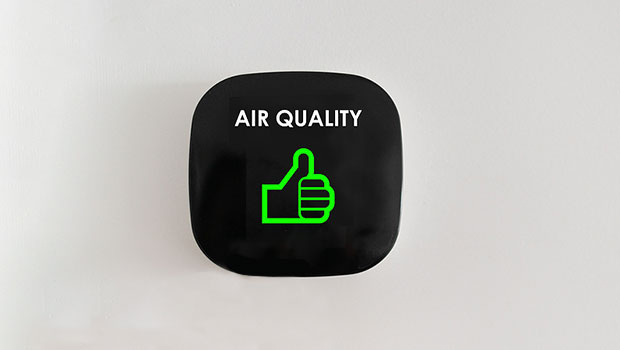CEA’s efforts to improve air quality in schools got a big boost today as other unions and stakeholder groups joined CEA for a news conference calling on the state to be a funding partner in improving school HVAC systems.
CEA has been advocating for improved air quality in schools for years, but the pandemic has brought home that now is the time to act, said CEA President Kate Dias.
“If we fail to act, we fail not just the educators in our buildings, but also the students. We’re asking that politicians stand up and take care of our students, teachers, and communities,” she said.
Dias said that in her second-floor math classroom at Manchester High School the temperature would rise to 95 degrees Fahrenheit in the warmer months with seventy percent humidity. “It’s incredibly uncomfortable, but also not conducive to learning. During the pandemic, we’ve been forced to leave windows open during the winter when temperatures fall below freezing. It is not reasonable. Nobody on this call would want to work under those conditions.”
And neither do teachers. A recent survey of CEA members found that 97% say improved ventilation in schools is a top safety priority, but only 27% say improvements have actually been made to their school’s ventilation system.
Fran Rabinowitz, the executive director of the Connecticut Association of Public School Superintendents, spent most of her career in Bridgeport, including three years as interim superintendent. She said she frequently had to send kids home after a half day in school because of extreme heat in school buildings.
“The heat in the buildings was so high that I deemed it to be unsafe for our children. And honestly, it was a difficult thing to make that decision midway through the day. Our children could ill afford to lose that learning time in school, but that was real life. Calling parents and saying, ‘Come pick up your children,’ was a thing that happened often in the month of June, and it’s unacceptable.”

CEA President Kate Dias said extreme heat and poor air quality are creating additional barriers to learning that disproportionately affect students in already disadvantaged school districts.
With schools increasingly being asked to serve as much more than academic institutions and provide a range of services to communities, Rabinowitz said that they need to be treated commensurately.
“We struggle every year to have summer programs,” she said. “As a state we need to provide the conditions that allow our schools to be used year round.”
For years, a lack of funding has been the excuse not to upgrade HVAC systems or install air conditioning in schools. While federal dollars that have been made available to schools can help, towns and cities also need assistance from the state.
“The state has determined that a school’s roof has an end of life that requires replacement, that windows have an end of life that require replacement, but air quality systems are only updated if they stop working all together,” said Joe DeLong, executive director and CEO of the Connecticut Conference of Municipalities.
The state makes annual bond funding available to towns for school construction and repairs, but has so far not permitted HVAC updates to be considered for bond funding.
“We should be treating air quality systems the same as roofs and windows—recognizing there’s an end of life and that the state should be a partner in replacing outdated systems,” DeLong said.
Newtown Board of Education Chair Michelle Embree Ku said that her town has three schools that are still in need of HVAC updates. In one building, which is celebrating its centenary, classroom conditions on the third floor can become unbearable, yet when windows are open the noise from the busy street outside interferes with teaching and learning.
Embree Ku said that to remedy the issues at all three school buildings will cost the town $19 million. “These are town-wide projects that take years of planning and investment. Without state and federal support there will be disparities in how needs are addressed in all our schools.”
Wealthier towns are more likely to be able to make investments and find ways to update their schools’ ventilations systems, which quickly creates an equity issue, Dias said. “You have the haves and have nots lining up across the state. Extreme heat and poor air quality are creating additional barriers to learning that disproportionately affect populations that don’t need more barriers.”
Studies have shown that students learn less in hot classrooms.
If districts make use of federal funding and the state broadens its criteria for when schools can use bond funding, “The stars are aligned for legislators and the governor to make a commitment right now,” said CEA Executive Director Donald Williams. “Few things are as important as the quality of air in our schools.”







